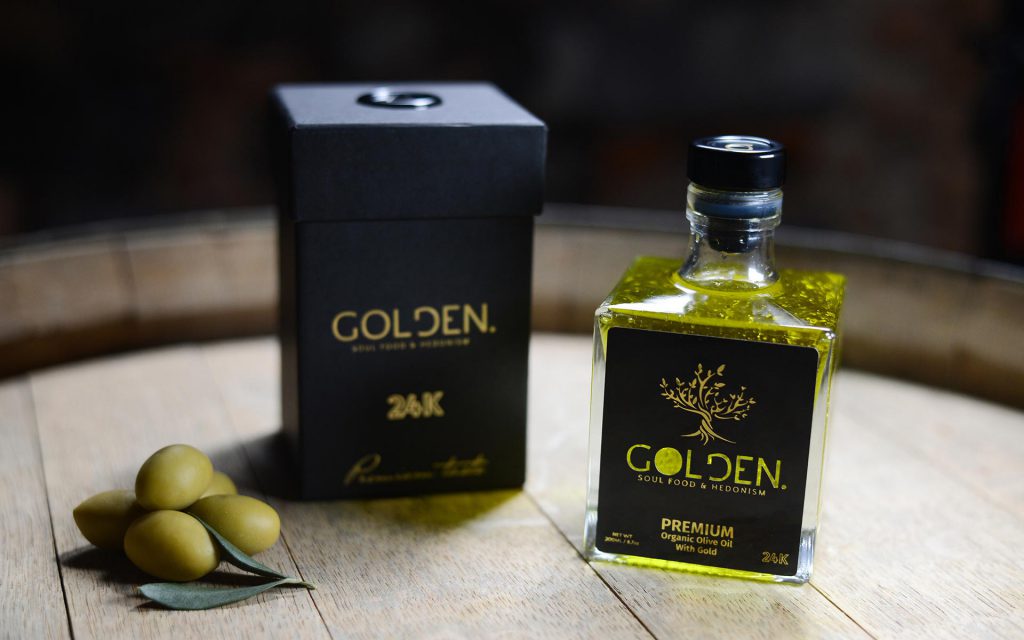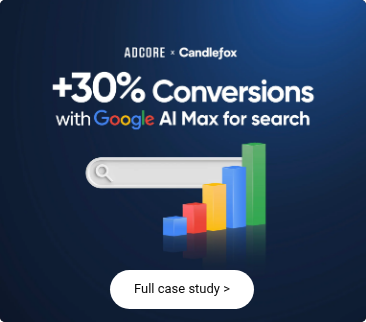Marketing in 3 Levels of Profitability: Mainstream, Premium & Luxury
Everyone in the business world knows that there are two ways to make money: Selling to many customers at a relatively low price or selling to a smaller clientele base at a high price – everything according to the industry and your marketing strategy.
The fundamental fact is that there are more buyers for cheaper products and services than for more expensive ones. A lower price usually allows for a smaller profit margin for every product or service sold.
However, with proper business management, sales on a larger scale can yield significant profit. In contrast, there are usually high costs at the high end of the market spectrum, behind the high prices. Here, too, proper management and marketing mix is necessary to ensure good profits despite having a lower clientele base.
A central component of proper management is proper marketing. in this article, I will break it down into three different types of marketing for three levels of profitability: Mainstream, premium, and luxury. Each one of them has its unique challenges and ways of operating.
Deciding on the proper marketing strategy (This is how Elon Musk is doing it) is critical to utilizing one’s marketing budget intelligently and efficiently from a strategic standpoint.
The first level of profitability: The mainstream marketing strategy
Mainstream marketing, i.e., “regular” marketing, offers products and services that serve a practical use that most buyers consider reasonable at prices that most buyers are ready to pay. A solid marketing strategy is essential to ensure products remain competitive and appealing to consumers within this segment.
Most of the business world functions based on this principle, starting from consumer products in supermarkets, through the fashion and cosmetics industries, to service industries like cell phone and cable TV subscriptions, banking, restaurants, hotels, and vacation packages abroad.
There is obviously a range of prices and varying needs that are fulfilled within the mainstream market, ranging from discount to convenience, but that’s the basic idea behind it.
The profitable pricing method in the mainstream market is based on cost plus a reasonable additional profit. It also considers competitor prices and consumer perception regarding what is a fair price for a specific product or service.
- Attaining and preserving a level of consumer awareness of the brand and active awareness that are effective against the competition.
- Building perception of “it’s worth it” (concerning cost) versus need (even regarding experiential products and services like food and recreation) and trying to make it into “it’s worth it more than…” compared to the competition.
- Encouraging buying habits and occasional spontaneous purchases In sectors where purchasing is constant or cyclic.
In marketing and branding strategy, there are three levels of profitability: mainstream, premium, and luxury. Which one best fits your brand?
People trust Gold & Diamonds
We worked with a mainstream jewelry brand that set up booths in department stores and malls a few years ago. In a consumer study that focused on the personality types of buyers in the lower-priced market range, we discovered that those buyers would be less decisive about gold and diamond jewelry.

To build that “it’s worth it” perception, we communicated proof and support in various ways that the gold was pure and the diamonds were real.
It affected the sales so dramatically that the company began to expand into its own chain of independent stores successfully. The mainstream market is based on availability, accessibility, and convenience. It utilizes tools like advertising, having a significant presence on social media, including utilizing the reach of existing influencers, promotional sales, and loyalty programs (which are sometimes exaggeratedly referred to as “Customer Clubs”).
The second level of profitability: premium marketing strategy
Premium marketing offers the highest level of functional usability and something additional, which I will touch upon later on. But, first and foremost, a premium product or service provides:
- The best quality or performance.
- Innovation (ahead of all the other players in the industry).
- An optimal customer experience.
A well-defined marketing strategy is essential for premium brands to highlight these unique attributes and position themselves effectively in the market.
A premium brand is a high standard that is readily accessible for all those willing and able to pay its premium price. Most product and service industries have a premium level. Take the world of wine, for example; the relatively expensive wines in the supermarket are the starting level of premium, which extends further to specialty wine stores, which offer a more extensive selection of premium wines.
Such stores are retail stores that specialize in premium products, just like specialty pastry shops, among plenty of other examples. Airline companies have a business class. Banks have memberships for affluent clients. Hotels have specialty suites, and many hotel chains have separate premium-level hotels. Real estate brokers specialize in premium residences, though many of them refer to it as ‘luxury’.
I would dare say that the vast majority of the above, generally referred to as luxury products and services – are actually premium products.
There are mainstream brands with high-end premium products or services (like Lufthansa). And there are big premium brands owned by companies that offer mainstream products or services (such as Lexus, which Toyota owns) or companies that specialize in premium (like Bulthaup).
Premium brands benefit from luxury, but it’s important to distinguish that they aren’t luxury brands but brands that offer luxury. This distinction is important because brands (including people) may have an element of prestige on various levels – professional, academic, religious, political, artistic, etc. – without actually being luxury brands.
Thanks to innovation, though not in its merit alone, premium brands are distinct. Many premium brands invest effort in creating a methodical difference between themselves and their competitors through various approaches. Their distinction is a central component in building that sense of desirability and preference that justifies its prices.
The Golden Olive Oil
The brand Golden Products was recently launched by Kristjan Podgornik, the son of an art dealer. The brand offers a variety of specialty products.
The first product they offered for sale was a highly refined organic oil manufactured from supreme olive trees in Slovenia and enriched with 24 karat gold leaves. In recent years, the brand built its reputation in highly rated Michelin-starred restaurants and now offers it to the general public in an elegant 200ml bottle that carries a price tag of $265.
If you think that this is the most expensive bottle of olive oil, I suggest you check out Golden Olive Oil, which offers a similar Croatian product for 1,000 Euros.

Source: Golden Products
The pricing method in the premium market is similar to that of the mainstream market, with a significant difference – there is a greater profit margin. The customer pays a “premium price” and lauds the company for its uniqueness, excellence, innovation, and added value that many premium brands offer their customers on a psychological-emotional level, experiential level, and social level.
Premium-brand customers usually indulge themselves and see their purchase as an expression of their financial standing, a reward for their achievements, and above all else – an expression of their identity.
Frequently, they also get held in high esteem by those around them. As a result, premium brands are “status symbols” that are more common than luxury brands.
The premium market is usually less conditional on tight competition than the mainstream market. However, it puts more emphasis on a higher level of specialization, and its main challenges are:
- Reaching the right customers who want to acquire premium brands and are ready to pay the price.
- Demonstrating that sense that a brand is at a premium among prospective customers.
- Building the prestige that is based on preferential distinction and practicality
- Establishing desirability of the brand on the one hand and justifying its prices on the other hand.
The “flipping” strategy
One of our customers represents US companies in Israel. They specialize in acquiring high-end real estate properties in desirable areas for investors. These properties are sold in closed auctions and conducted in courtrooms.
Participating in the auctions requires a special legal status and a high level of skill since the acquisition offers are made without showing the actual property (though all of the information about it is provided). The auction is concluded within 30 minutes, and the properties are acquired at about 30% under their market prices.
After the acquisition, the US companies offer their management services to rent out the property or put it up for sale. Following our advice, our customer decided to set himself apart by focusing on one marketing strategy when working with investors, among various other strategies that the US companies offered: The “flipping” strategy.
With this strategy, the acquired property is always put up for sale right after being renovated or upgraded. The return on it and the capital are then used to purchase another property. This strategy allows for a great return on investment in very solid real estate transactions.
A premium heart
In the heart of the premium market, a lot of resources are invested in building up the perception of high value, which, in the eyes of customers, justifies not only the price but also the additional effort, among other things, to get to the locations where the specialty products are sold.
The premium market utilizes promotional product launches, events, and PR campaigns to build and manage its prospective clientele base. In addition, it uses sophisticated in-depth presentation tactics in its advertising to create a perception of higher value.
It Utilizes unique and selective brand marketing while offering the customer a gift along with their purchase rather than offering a discount on the purchase itself.
On the other hand, the luxury market is almost above the competition and requires an exceptionally high level of expertise.
The third level of profitability: The luxury marketing strategy
The luxury market offers exceptionally high value, rarity, uniqueness, and a remarkable experience for its customers. The product or service within the luxurious category isn’t necessarily the most premium. It doesn’t always provide the highest level of quality and functionality, an innovation that is ahead of all the players in the industry, or the most optimal customer experience – though in many cases, it does.
How do you define luxury product? A luxury product or service is characterized by its being special and magnificent, much more so than functional. It provides elated pleasure, an experience of being elevated and reaching the peaks of human talent and capability.
It has such a nature that translates to a unique and distinct customer experience, even if that experience may not be optimal. It doesn’t necessarily provide the customers with what they want but instead invites them for an adventure of its own creation.
A luxury brand engages its customers in dialogue for years to come, customers who have intense expectations for it. So it is always on a mission to surprise them, move them emotionally, and please them.
The case of Mercedes’ baby strollers
Mercedes recently launched a line of four baby strollers developed in collaboration with the stroller company Hartan. Together with a matching case for diapers, the strollers allow the babies to experience a ride in Mercedes.
Each one of the models is based on an existing model within the brand. Its characteristics include a leather seat with a button for adjusting the height, with the seat facing forward or backward towards the parent pushing the stroller.
It’s equipped with a padded shoulder seatbelt, a sunroof that opens and closes, tires and axles that allow for a smooth ride in any kind of terrain, a brake mechanism, a parking brake, and more. The strollers come in black and graphite and show off a sporty design that is elegant and practical. Its price tag: $1,000.
Luxury brands are usually exclusively luxury brands, and only in some cases do they market premium products and services at a lower price point.
The pricing method in the luxury market is completely separate from manufacturing and marketing costs (think of luxury watches, for example). One can refer to it as: “How much a customer is willing to pay.”
The price of a luxury brand is primarily based on experiential, psychological-emotional, and social value – which is far greater than the functional value of the product itself.
The brand’s desirability leads to such that you may often come across auctions in the luxury market, or in other words: customers competing with each other over who gets the product or service which, characteristically, is offered in limited quantities and oftentimes requires a long waiting period. For instance, the waiting period for a Hermes Birkin bag is six years.
The luxury market is almost entirely above the competition, thanks to the distinction of luxury brands. However, it requires the highest level of expertise to reach such a level.
Luxury market – primary challenges:
- Managing the brand’s level of exposure with the approach of “many want it, but few can buy it,” or “only those who need to know about it – will know about it,” according to the brand’s strategy.
- Reaching the right clientele, who are few and not easily accessible, especially staying relevant and maintaining a relationship with those customers for an extended period.
- Continually managing its customers’ emotions.
- Building exceptionally high value that is experiential, psychological-emotional, or social according to the brand’s strategy, and in doing so, creating a great sense of desirability for the brand.
- Creating and maintaining the “brand’s trance” is a sort of captivation the brand has over its customers.
The luxury market “allows its customers to buy” rather than puts effort into selling. Its rules are mostly the entire opposite of those of the mainstream market.
In doing so, it limits and filters accessibility. Alongside some of the tools of the premium market, the luxury market utilizes gossip and rumors, stirring up the thirst for “experiences that money can’t buy” for an exclusive clientele base via in-depth content through media whose creativity is an art form in itself.
What level of profitability do you want?
“Only luxury affords us luxury profits,” said Bernard Arnault, CEO of LVMH and the third wealthiest person in the world according to Forbes Magazine. But you are welcome to choose the level of profitability that you want to attain for yourselves and match it up accordingly with its suitable marketing level.
The article was authored by Dr. Dan Herman, a renowned strategist and expert in creating high brand value. Dr. Herman is the CEO of Competitive Advantages, a leading agency providing comprehensive strategy, innovation, marketing, and branding consultation services. For more information or to get in touch with Dr. Dan Herman, please visit his website at www.danherman.co.il.
Trending Articles
Get exclusive CMO tips that I only share with email subscribers.
Related Articles

